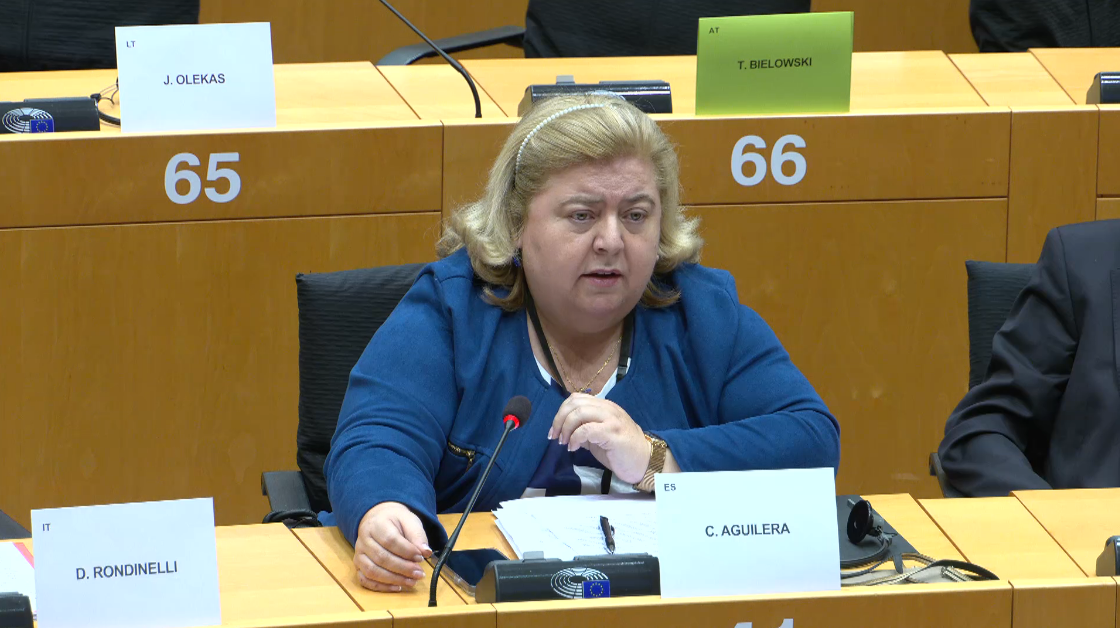Not so sure about SUR: MEP Aguilera raises concerns about proposed regulation on plant protection products

The proposed Sustainable Use of Pesticides Regulation (SUR) falls under the European Green Deal framework, with the primary objective of reducing the use and risk of chemical pesticides by 50% by 2030. However, in a recently published working document, MEP Clara Aguilera (S&D) highlights a number of issues that need to be addressed before the regulation can be effectively implemented.
Definition and ban of sensitive areas
The SUR proposal provides a definition for sensitive areas and strictly prohibits the use of plant protection products within these areas, with only a few specific derogations allowed. This approach aims to protect vulnerable ecosystems, water sources, and habitats from the potential harm caused by chemical pesticides. However, the combination of the definition and the blanket ban raises several concerns.
Firstly, the current definition of sensitive areas would encompass large portions of agricultural land across several EU Member States. For example, in Spain, 40% of the utilised agricultural area would be classified as sensitive, affecting over 80% of key crops like citrus fruits. In France, up to 80% of the agricultural land would be affected, while in some Northern European Member States, nearly 100% of the utilised agricultural area could fall under the sensitive areas category. This broad classification could have severe repercussions for food production, farmers' incomes, and overall agricultural output.
Secondly, the ban on plant protection products in sensitive areas could negatively impact organic farming practices. Many organic crops, which already follow strict guidelines regarding pesticide usage, could be subjected to additional restrictions, making it even more challenging to maintain productivity and profitability in these sectors.
Lastly, the ban on plant protection products in sensitive areas could have unintended consequences on biodiversity. For instance, in regions like the Albufera or the Ebro delta, rice cultivation plays a crucial role in maintaining the habitat of various bird species. The prohibition of plant protection products in these sensitive areas could disrupt rice cultivation, putting the survival of these bird populations at risk.
To address these concerns, policymakers must carefully examine and revise the definition of sensitive areas and the associated bans. This could involve reevaluating the criteria for designating sensitive areas, adjusting the restrictions on plant protection product usage in these zones, and finding a balance that ensures both environmental protection and agricultural viability.
Member States reduction targets
The SUR proposal seeks to establish mandatory reduction targets for Member States concerning the use and risks of chemical plant protection products, as part of the European Green Deal's Farm to Fork Strategy. However, the current calculation methodology in the proposal raises concerns, as it does not account for regional variations in crop exposure or susceptibility to pests.
Agricultural practices, pest pressures, and crop types can differ significantly between Member States and even within individual countries. For example, the pest-related challenges faced by Mediterranean regions can be vastly different from those in continental areas. By not considering these regional differences, the current calculation methodology may impose unrealistic or unattainable reduction targets on Member States, leading to potential negative consequences for their agricultural sectors.
Furthermore, the calculation methodology does not recognise the efforts made by Member States before the reference period of 2015-2017. This omission could penalise countries that have already made substantial progress in reducing their reliance on chemical plant protection products, creating a disincentive for proactive measures.
To address these issues, the document calls for amending the calculation methodology to take into account differences by area and crop. This could involve incorporating factors such as regional pest pressures, crop types, and climatic conditions, ensuring that reduction targets are tailored to each Member State's unique agricultural context. Additionally, acknowledging and factoring in the efforts made by Member States before the reference period would create a more equitable and accurate baseline for measuring progress towards the proposed reduction targets. By refining the calculation methodology, the SUR proposal can better promote sustainable agriculture and environmental protection across the diverse landscape of the European Union.
Administrative burden
The SUR proposal, while aiming to promote sustainable agriculture and reduce the risks associated with chemical plant protection products, has raised concerns regarding the potential administrative burden it may impose on farmers and governments.
One key issue is the proposal's intention to make Integrated Pest Management (IPM) Guidelines compulsory. While these guidelines provide valuable guidance for sustainable pest management practices, transforming them into binding regulations could make it difficult to adapt to ever-changing field production conditions. The dynamic nature of IPM, which allows for constant updating and improvement, might be stifled by rigid regulatory requirements.
Another concern is the potential administrative complexity introduced by the proposed regulation. The SUR proposal requires the establishment of electronic registers to be filled out by farmers, which could be time-consuming and burdensome, especially for smaller-scale agricultural operations. While these registers can be useful tools for gathering information, it is crucial to ensure that the obligations placed on farmers are limited to strictly necessary data.
Additionally, the preparation of National Action Plans at both national and EU levels might prove to be a complex and resource-intensive process for governments. The document highlights the need to simplify and streamline these processes to avoid overburdening farmers and government agencies, while still effectively promoting the adoption of sustainable agricultural practices.
By addressing these concerns and minimising the administrative burden associated with the proposed regulation, the SUR can better support farmers and governments in their transition towards a more sustainable and environmentally friendly agricultural sector.
No additional CAP funding
The SUR proposal, while setting ambitious targets for reducing the use and risks of chemical plant protection products, fails to allocate any additional funding through the Common Agricultural Policy (CAP) to finance the measures it proposes. This oversight raises concerns, as the implementation of these measures would inevitably lead to increased unit production costs for farmers, impacting their economic and social sustainability.
The Commission acknowledges that the proposal would result in increased costs for farmers due to a variety of factors, such as the reduction in crop yields, more stringent information requirements, and additional charges for professional users of phytosanitary products. The SUR proposal does provide a transitional period of five years during which the increased costs could be covered by CAP funds. However, this does not include any additional budget allocation to accommodate the proposed measures.
The document argues that additional funding should be made available to finance these new objectives, especially since they extend beyond the exclusive scope of agricultural policy. Providing adequate funding is crucial for ensuring that farmers and governments can effectively implement the proposed measures without jeopardising the economic viability of the agricultural sector.
Other important issues
The working document emphasises several other important issues that need to be addressed in the SUR proposal to ensure its success and maintain a fair and competitive market.
Availability of Alternatives: The document highlights the importance of having effective and economically viable alternatives to chemical pesticides before imposing reduction targets. The 2009 Directive has already contributed to reducing pesticide use in the EU. However, further progress relies on the availability of feasible alternatives that provide comparable levels of protection for crops without harming human health and the environment.
Broadening the Definition of Biological Control: The document calls for a wider definition of biological control, which should not be limited to invertebrates but also include other means such as peptides, enzymes, and other biological agents. This broader definition will enable a more comprehensive approach to sustainable pest management and ensure that all potential alternatives are considered and developed.
Imports and International Agreements: The working document emphasizes the need for the European Union to ensure that imported agricultural products meet the same standards and requirements as those imposed on EU farmers. This can be achieved by including appropriate clauses in trade agreements, which would help maintain a level playing field for all parties involved. By doing so, the EU can prevent unfair competition and guarantee that consumers have access to safe and sustainably produced products, regardless of their origin.
From "one size fits all" to "delicate balancing act"?
With all of the variations in climate, geography, and agricultural practices across member states, there is a high level of difficulty involved in designing a regulation that is universally applicable. The concerns raised by MEP Clara Aguilera highlight some of the complex challenges that need to be addressed to ensure the SUR can be effectively implemented while minimising its impact on EU farmers. It remains to be seen how policymakers will respond to these concerns and whether the final regulation will successfully balance environmental goals with the needs of the agricultural sector.

